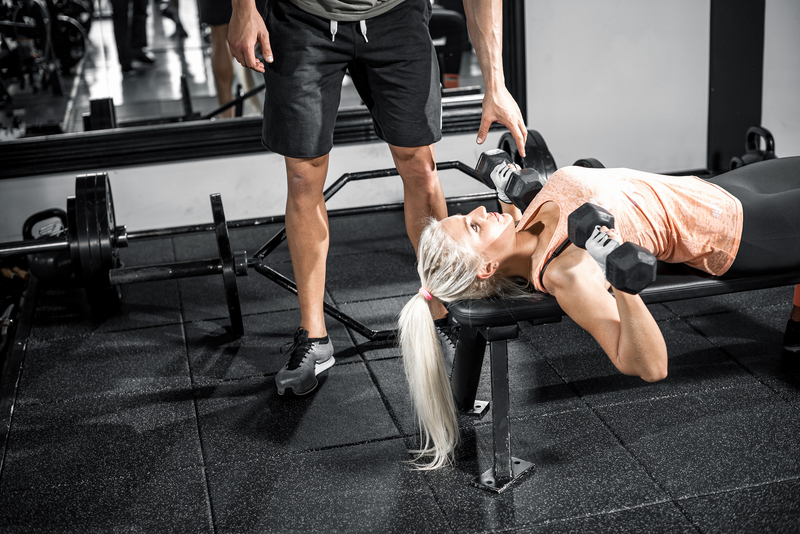What Is Relative Strength? (And how does it relate to fitness?)

Bigger doesn’t always mean stronger. It depends on whether or not you’re talking about relative strength. What is relative strength? Your relative strength is how much you can lift for any given exercise, taking your body weight into consideration.
What’s the Difference Between Relative Strength and Absolute Strength?
There’s more than meets the eye when it comes to “being strong.” Being strong can have different definitions. Your “absolute” strength means the most you can lift for a specific exercise for one repetition. While most people want to know “how much you can bench,” that’s not necessarily an accurate assessment of your strength, and here’s why:
If 2 individuals are 225 pounds with a similar age and body composition, then yes, the max they can lift for one repetition is a good measure of their absolute strength. But, what if the athletes are vastly different in size, with 1 person weighing 150 pounds and the other weighing in at 225? Should they be able to lift the same amount of weight to be considered strong? The answer is no, and this is where relative strength comes in.
Relative strength is calculated by dividing your one-rep max lift by your body weight. For example:
- Athlete #1 benches 225 pounds and weighs 150 pounds. His absolute strength is 225 pounds for that exercise, but his relative strength is 1.5 (the amount lifted divided by his body weight).
- Athlete #2 benches 250 pounds and weighs 200 pounds. He has the same absolute strength as Athlete #1 for the bench press (225 pounds), but his relative strength is only 1.25.
So, who is stronger? It’s all relative!
How to Test Your Relative Strength
Testing your relative strength is actually pretty straightforward. A basic exercise like a pull-up can provide insight into your strength. Check yourself by seeing how many pull-ups you can do. The greater the number of pull-ups you can complete, the better your relative strength.

Another great way to test yourself is by doing the plank exercise. Aim to hold a plank position for at least two minutes. If you can go longer, that means you’re stronger. If you can’t quite reach the two-minute mark, you have some work to do.

Lastly, you can also calculate your relative strength by figuring out your strength-to-weight ratio. How do you do this? Simply pick an exercise (for example, chest press). What is the maximum amount you can lift one time? Take that number and divide it by your weight to come up with your strength-to-weight ratio.
The goal is to get all of these numbers to improve over time as you continue to work out. Yes, you probably also want to enjoy the aesthetic appeal you get from exercise, but increasing your overall strength should be an important facet of your fitness program as well.

Improve Your Relative Strength
If you agree improving your relative strength is important and you’re ready to get started, here are some successful strategies you can use.
- 1. Lift heavy weights—if you don’t challenge yourself, you won’t change yourself. Lifting heavy is essential to making progress in the gym. If you’ve been stuck in the 12- to 15-repetition range for every exercise, it’s time to switch things up.
Working in a lower rep range, ideally 2 to 6 reps per set, will help you get stronger. But, you’re not just doing less work: you’re lifting heavier weight. The weight you lift for the 2 – 6 repetitions should be about 85 – 95% of the amount you can lift one time (i.e., your one-rep maximum). Try to limit your total sets of exercises per body part to five or six. This will give you the perfect amount of weight, coupled with the ideal volume, for maximum effectiveness to increase relative strength.
2. Stay lean and load up with nutrient-dense, calorie-conscious foods—if your body fat ratio is too high, you won’t be as strong as your more muscular counterpart. Here, too, it’s all about ratios. You want to maintain a healthy amount of muscle tissue and a low level of body fat if your goal is to max out your relative strength.
In addition, eating healthy, whole, natural foods with plenty of quality proteins will help you both power through your workouts and recover adequately to build your strength.
3. Keep the cardio at a minimum—this great news alone might be enough to make your heart rate jump, but it’s true. Don’t burn off all your hard-earned gains with too much cardio. Sure, you want to be cardiovascularly fit, but do the minimum amount needed to get you there.
4. Do explosive exercises and add plyometrics—really want to bump up your relative strength? Add speedwork and jumping movements to your workout routine. Plyometric exercises will help retrain your system to use different muscle fibers and fire up your nervous system while helping you build force and power into your movements.
5. Rest up between sets—allowing yourself to fully recover between sets (for several minutes) can help you explode through every set of your relative strength training. This is important as you want to get the maximum benefit from each and every perfectly performed repetition you do.
Improving your relative strength is a worthy goal. It’s not always about how big you are. Impressive performance gains can be achieved with the right training strategies and a little bit of persistence.




 7 Signs Your Body is Seriously Low on Collagen (not just wrinkles)
7 Signs Your Body is Seriously Low on Collagen (not just wrinkles) Health Expert: "Turmeric Doesn't Work (unless...)"
Health Expert: "Turmeric Doesn't Work (unless...)" 3 Warning Signs Your Probiotic Supplement is a Total Waste
3 Warning Signs Your Probiotic Supplement is a Total Waste

